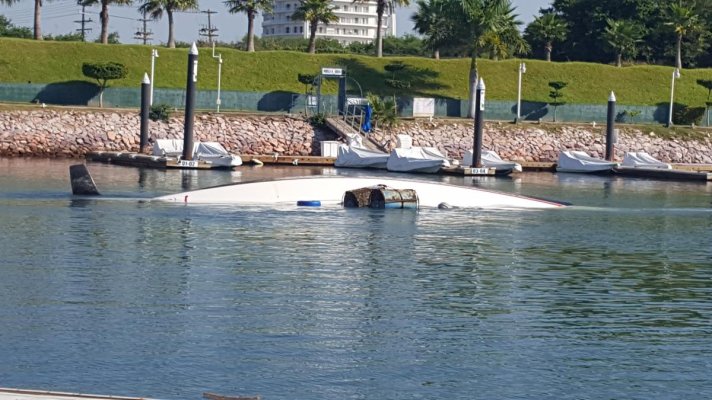Alaskan Sea-Duction
Guru
- Joined
- Jul 6, 2012
- Messages
- 8,084
- Location
- USA
- Vessel Name
- Alaskan Sea-Duction
- Vessel Make
- 1988 M/Y Camargue YachtFisher
Last week I experienced something I have never before experienced. The ocean surge.
The entrance to Mazatlan Harbor is one such place. The entrance is very narrow and as a swell enters the entrance, half of the swell crashes on the rocks and the other half flows into the harbor.
Pairadice is tied to Marina El Sid, the surge affects this marina. As a swell enters the marina it pushes the water into the marina and moves all the boats back. As the swell moves back to sea, the water switches direction and moves out.
So the timing to enter the entrance is critical. A 45-60 ft sail boat mis-judged. As he entered the harbor, a swell caught him, causing the boat to "surf" the swell. This cause him to lose steering. He did not have enough power to back off and he crashed into the rocks snapping the mast off with the keel broke off. He was able to get off the boat before it rolled.
Took a crew with barrels to float it enough to get it to a dock.They worked for a couple of days and were able roll the SV upright.
I thought the currents of the PNW was bad.
The entrance to Mazatlan Harbor is one such place. The entrance is very narrow and as a swell enters the entrance, half of the swell crashes on the rocks and the other half flows into the harbor.
Pairadice is tied to Marina El Sid, the surge affects this marina. As a swell enters the marina it pushes the water into the marina and moves all the boats back. As the swell moves back to sea, the water switches direction and moves out.
So the timing to enter the entrance is critical. A 45-60 ft sail boat mis-judged. As he entered the harbor, a swell caught him, causing the boat to "surf" the swell. This cause him to lose steering. He did not have enough power to back off and he crashed into the rocks snapping the mast off with the keel broke off. He was able to get off the boat before it rolled.
Took a crew with barrels to float it enough to get it to a dock.They worked for a couple of days and were able roll the SV upright.
I thought the currents of the PNW was bad.




